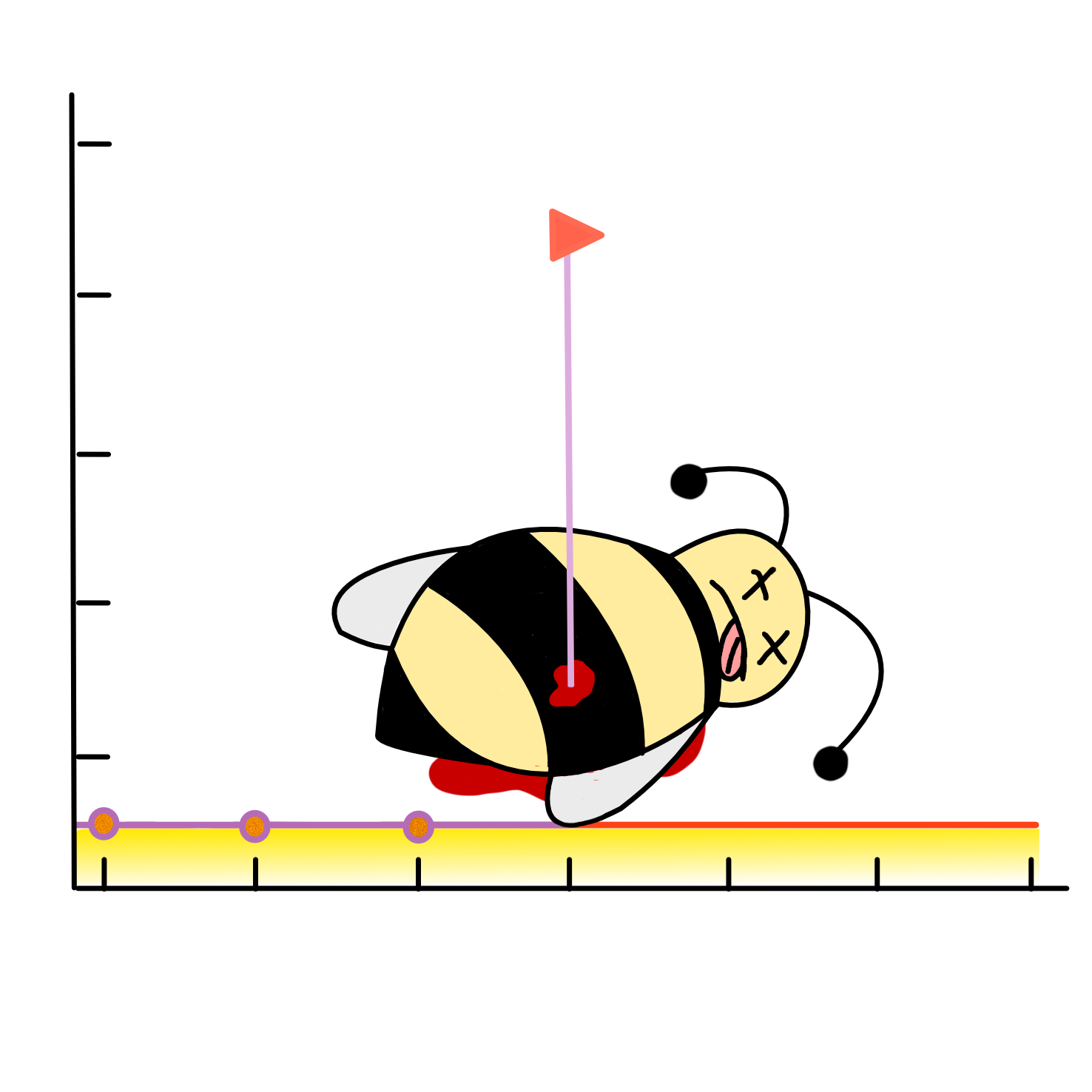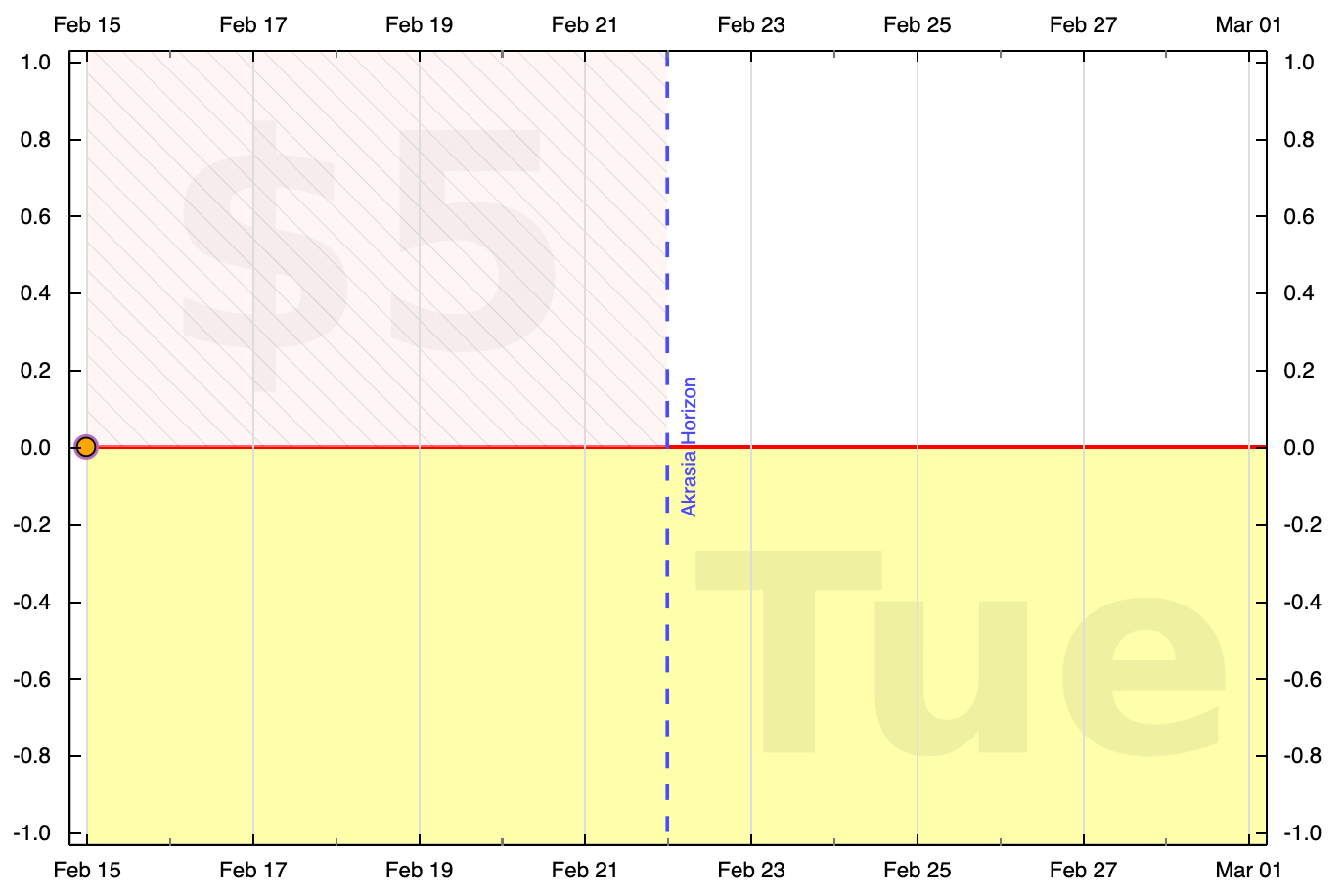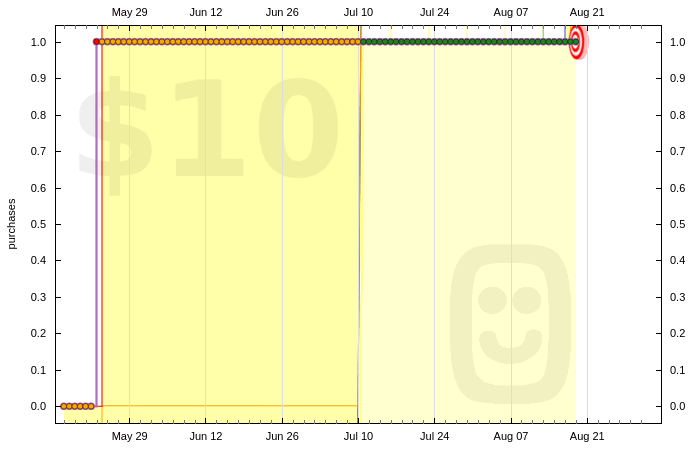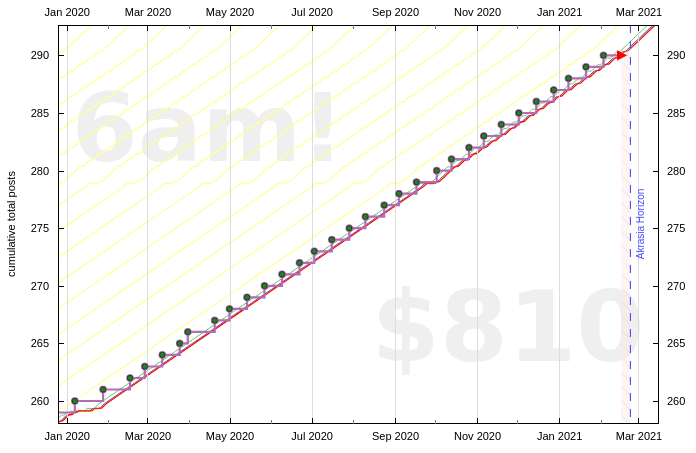
Look what we found in the attic! Our original Support Czar, Chelsea — known for such classics as “Beemind Easy Things” and “Weasel Heart-To-Heart” — wrote this screed in 2017. It was a much better screed when she wrote it, because Beeminder was way worse then than it is today. (Yay!) So we modernized it and removed the especially scathing now-false bits and, despite being less of a slam-dunk denunciation, we stand by it.
I hate do-less goals with a rate of zero, and I am here to convince you never to use one again.
The Situation
If you’re among the 98% of Beeminder users that have ever created (or considered creating) a weight-loss goal, you probably have a guilty pleasure food or two or twenty. Maybe it’s the infinite candy drawer at your office. Every day around 3pm, you find yourself pulling up to pick out a few Starburst. You know it’s a bad habit, and you really need to stop, but it’s so hard… But now you’ve found Beeminder, the perfect tool to curb your candy addiction! You vow to never open the drawer again and create a goal to track it. It’s a do-less goal, obviously, since you want to do less candy hauls, and the rate is zero, because you are seriously done with the candy drawer.
(WARNING: heavily opinionated ranting ahead)
But it’s not a do-less goal! It’s a do-NEVER goal. You don’t want to use the drawer less, you want to use it never. There’s no goal type for that. You could use a do-more or a do-less to accomplish it [1], but I strongly strongly encourage you to try the do-more first. Do-less goals have their use cases, and they can bee really awesome! But they’re not the best tool for a do-never goal, and you deserve the best.
Why They Suck
Is it wise to start my rant rationale by pointing out significant Beeminder flaws, as I am a Beeminder employee? Well, I’m doing it anyway. Squeaky wheel gets the grease!
Here’s a picture of a fresh do-less zero goal:

My datapoint starts out on track, right on the bright red line, and the line’s not moving, because its rate is zero. In Beeminder’s brain, I’m already totally in the clear forever even if I immediately forget about this goal and never touch it again. This problem is what triggered the creation of Pessimistic Presumptive Reports. I’ll rant on PPRs in the next point.
(Update from the future! This part of Chelsea’s rant lamented how hard it was to actually get reminders on a do-zero goal. But as long as you leave Pessimistic Presumptive Reports alone, her rant doesn’t apply. We fixed this part of the problem in 2019. Phew!)
(Next was Chelsea’s PPR rant. But this is also not too applicable to modern Beeminder. Imminent PPRs are made visually clear on your graph and everything. No surprises. Again, just don’t turn PPRs off. As Chelsea put it, if you happen to have even mild weasel tendencies — weaseling-of-omission vs weaseling-of-commission — then you really need those PPRs. Otherwise you can stick your head in the sand and your Beeminder goal will have zero sting, never derailing unless you explicitly cause it to derail, by adding data. Moving on to the still-true parts…)
1) No motivating graph power
A mostly-successful do-zero goal looks like this:

A mostly-successful do-more goal looks like this:

Maybe it’s just me, but I enjoy the “climbing a mountain” feel of #2 more than the “nothing is happening… oh but that’s good” of #1. (So does Grayson Bray Morris!) If the hand-wavy graph image unmeasurable “motivation” factor doesn’t do it for you, perhaps you’re more interested in the cold hard cash factor…
2) They’re not free
Is it wise to point out something that might result in fewer Beeminder subscription dollars, as I am a Beeminder employee? I’m doing it anyway. (Subscribe to Infinibee to show your gratitude for my forthrightness and customer advocacy!)
Do-less goals are a feature of the Infinibee plan. If you weren’t already a premium subscriber, you’d have to subscribe to get one! [3] Save yourself the [$8] and just use a do-more. You won’t regret it, or your money back. [4]
If you were already premium, this obviously doesn’t matter so much. And thanks for your support, we love you! <3
3) Breaks are weird
I couldn’t figure out a flowing witty transition into this one, but on a do-more goal, you set the rate to zero for the time period you’ll be on vacation. Do-less goals don’t work like that. The best way to take a break on a do-less goal is to turn off the PPRs before you leave, and then… let it sit. When you come back, ratchet your safety buffer away and turn the PPRs back on to get back on track. With a do-less zero goal, you won’t have built up any safety buffer, of course — but it might be too easy to forget about ticking that PPR box on again… Do-more goals, with their strictly defined (and visible!) break boundaries, don’t have this problem. The goal always works the same way, and you don’t have to juggle your settings twice to schedule one weekend trip.
(Another update from the future: There’s now another approach to breaks on do-less goals if you’re willing to use the road editor. Namely, insert a vertical segment at the start of your break, the height of which you math out to be the sum of the PPRs that will accumulate during your break.)
(end ranting)
The Do-More Solution
A do-never using a do-more means 7 days per week. Just create a do-more goal to not open the candy drawer with a rate of 7 per week. Every day you don’t open the candy drawer, you enter a 1. Every day will be a beemergency day, and Beeminder will send you reminders at the time of your choosing. Set the reminders to start at 2:30pm, right about when you start getting bored and wandering over to the candy drawer! Everything is simpler!
(One more note from the future to remind you that picking when your reminders start is now equally simple in the do-more and do-less version, but reminders in general do still work better for do-more goals than for do-less goals. We’re working on that!)
You’re still not eating candy, you have to enter your data every day, everything you’re achieving is the same, but Beeminder is better at reminding you this way, and you’re more likely to achieve your candy goal.
When to Do-Less
As always, I caveat everything I just said [5] by reminding you this is all my opinion, heavily biased by undoing many derailments and explaining this (in fewer words) many times over the years. I fully admit that I wrote this post so that I could send it to people in support replies and stop reinventing the wheel.
Do-less goals aren’t all bad — it’s just this one particular use case that Beeminder does not handle as smartly as the rest. Do-less goals are great when you actually want to do less of something: cutting your coffee intake from 2 cups a day to 1, limiting yourself to 15 minutes a day on Twitter, ensuring that you don’t spend more than $100/month on work lunches. If that’s your goal, do-less away! But if you’re really trying to do never, try starting a do-more instead.
Footnotes
[1]
Really, you could use any goal type to do it, if you’re a serious Beeminder junkie/hacker.
That’s why Beeminder is so fun, once you’re completely indoctrinated onboarded.
[3] You don’t have to stay subscribed forever though. You can subscribe for one month, create all the do-less goals your heart desires, and then immediately cancel. Approved loophole!
[4] Just kidding!!! Because you didn’t have to pay for it!
[5] The number of interesting goals, configurations, and hacks people come up with to make their Beeminder goals work for them continues to astound me. For those of you who love and rely on your do-less zero goals, keep at it!
Image credit: Faire Soule-Reeves.